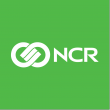BIAN adds first Middle East member

Hans Tesselaar, executive director, BIAN
The Banking Industry Architecture Network has gained its first member in the Middle East with the addition of Commercial Bank of Qatar to its roster.
BIAN is an independent, member-owned, not-for-profit association, designed to build and promote a common architectural framework for banking interoperability issues. BIAN’s goal is to define SOA and semantic definitions for IT services in the banking industry to create a standard semantic banking services landscape.
Also joining as new members are the Institute for Development and Research in Banking Technology, an R&D operation set up by the Reserve Bank of India, and Achmea, a Netherlands insurance provider. They will work with BIAN’s 42 existing members to build and promote a common enterprise architecture framework designed to resolve universal banking interoperability issues.
“It is great to add three more key members to our growing global network. This member signing is particularly significant for BIAN, as not only are we adding IDRBT from India and Achmea from Europe, but also our first Middle Eastern member,” said Hans Tesselaar, executive director, BIAN said. “The financial industry is changing at a rapid pace internationally. It is therefore important that BIAN works with global banks, banking software vendors and service providers to reduce IT infrastructure complexity – enabling financial institutions to adapt to this changing international landscape, respond more quickly to threats and opportunities and provide better services at lower costs.”
After a period of fast growth and expansion across the banking industry in the Middle East, the Commercial Bank of Qatar will now work with BIAN on infrastructural issues to avoid IT congestion, using the BIAN reference models to streamline the landscape and build a stable backdrop for future growth in the region.
“Commercial Bank of Qatar is an innovative organisation operating in a fast growing economy with the challenge of continuously improving its services and the digital experience of its customers,” said Harry Margaritis, head of IT enterprise architecture at the bank. “In this journey, having a technology landscape where information can be independently provided and composed, in an agile yet sustainable manner, is a prerequisite. We believe that the standardisation promoted by BIAN can drive the Bank into delivering even more groundbreaking products and services, and we are excited to be the first bank in the Middle East to join this organisation.”
The brief established for the IDBRT by the Reserve Bank of India is similar. It will be aiming to use BIAN’s framework to establish best practices across the rapidly growing and changing Indian banking sector. Shri B. Sambamurthy, director, IDRBT said: “Associating with BIAN will help us to participate in the evolution of banking standards and support the conversion to industry-wide best practices for Indian Banks.”
The new member signing coincides with a joint whitepaper released by BIAN and The Interactive Financial eXchange Forum. Implementing BIAN Service Domains using the IFX Business Message Specification explains how the BIAN and IFX standards can be mapped effectively to bank infrastructure, describing how they can be used together to improve existing systems.
The paper stems from research that set out to show how the two could work together in real-world implementations. “The underlying assumption for this proof of concept is that a bank with a desire to implement solutions based on a Service Oriented Architecture must do so within the context of existing IT systems, business procedures and technology governance,” the paper says. “Of necessity, then, adoption of SOA solutions is likely to be incremental and evolutionary. In order to be successful, SOA solution(s) must not disrupt existing systems and must be flexible enough to adapt to the bank’s environment while at the same time moving the systems forward with respect to standardisation and value-added functionality. Otherwise, the benefits of such implementations will be questionable if not completely negated.”
The report demonstrates that the BIAN and IFX standards “can be mapped effectively to a bank’s current IT landscape when necessary, and that they can be used together to achieve breakthrough efficiencies in the software development lifecycle”.











































